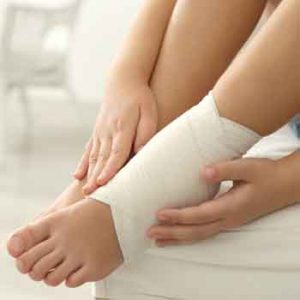
More evidence that low-calorie sweeteners are bad for your health
Studies show that artificial sweeteners can raise the risk of hypertension, metabolic syndrome, type 2 diabetes and heart disease, including stroke.

In January, many of us strive to be stronger, lighter, faster versions of ourselves.
It is also the busiest time of the year for physiotherapists. We are all so driven by the chronological time stamp of the new year that we forget all too quickly that we are using a body that hasn’t seen a pair of running shoes in months, if not years. Activity guidance does exist, but isn’t common knowledge to most. Inevitably, our enthusiasm out-sprints our physical capabilities and, ouch, we end up injured and back to square one.
Most people’s reaction to reduced exercise when injured will be to immediately reduce their food intake because they aren’t burning the energy exercising. But this can be counterproductive if taken to the extreme. When injured, your daily energy expenditure can increase by as much as 15-50% over normal, particularly if the injury is very bad.
If your injury is so bad you need crutches, your expenditure during walking can be even higher. Consequently, you are still burning calories at a higher rate when injured – and it is important that your eating matches what you burn off. What’s more, the composition of the food you eat can also help to speed up the recovery process.
» The new year, and renewed commitment to physical fitness can often results in injury.
» Contrary to what most of us believe we need more – and more nutrient-packed – calories when we are laid up with an injury, in order to heal properly.
Plan your protein
Muscle is very expensive to hold on to from a calorie perspective (up to 500 kcal a day for a muscular male). Use it or lose it stands true and you want to avoid losing the muscle mass you have, particularly if you are older. The total amount of protein in your diet is key to keeping the muscle you have when injured. So how much is enough?
One study found that athletes who increased the protein in their diet (to around 2g per kg of body mass per day) held on to their muscle mass better than those who reduced their protein intake (to around 1g per kg per day) when trying to lose weight. It is possible that simply maintaining a moderate to high amount of protein in your diet (1.6g per kg per day) is also sufficient.
What does that look like in actual food? For a 70kg person, that would be the equivalent of scrambled eggs (three eggs) or Greek yoghurt (200g) for breakfast (17-26g); bean salad with chopped vegetables and two cups of cooked lima beans (30g) for lunch; and a single pork chop (33g), 85g salmon (22g) or 100g of turkey breast (30g) for dinner.
Hard-boiled eggs, raw edamame, canned tuna, nuts, seeds and low-fat dairy are all easy high protein snack options. If you spread that intake over four equal portions throughout the day then further benefit can be had. Finally, protein sources high in the amino acid leucine (milk, for example) may also protect against muscle loss.
Don’t forget vitamins
Vitamin C and vitamin D both have key roles to play in recovery. Eating more than the recommended daily intake (10 micrograms for vitamin D, 40 mg vitamin C) won’t help you recover more quickly and can be detrimental to your health. However, if you were not getting enough of these vitamins before your injury, a deficiency will likely prolong your recovery. Consider whether you consume enough fruit and vegetables, and actively increase your intake of red meat, liver, egg yolk and vitamin D fortified foods such as cereals. For vitamin C, eat more oranges, strawberries, broccoli and potatoes.
Rather obviously, alcohol sits firmly in the cross hairs. Alcohol has been shown to slow wound healing and can also reduce your muscle mass during periods of low activity. If you are unfortunate enough to have suffered serious injury from a fall or crash, then omega-3 fatty acids (found in oily fish such as salmon and mackerel) can also slow down the wound healing process, so consume with caution.
With the right choices in the kitchen, you should soon be back on your feet and ready to reach those 2017 fitness goals.

Please subscribe me to your newsletter mailing list. I have read the
privacy statement